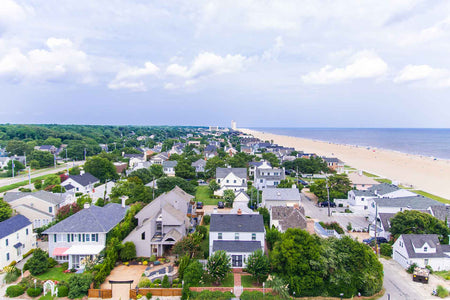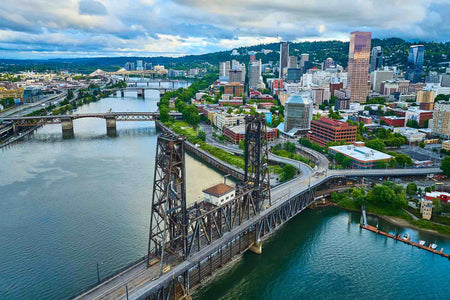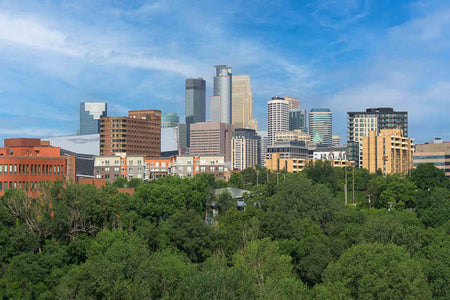For many, living in Hawaii is a dream come true. With its breathtaking beaches, lush landscapes, and warm climate, it's easy to see why. However, for those with allergies, this paradise can quickly turn into a nightmare. The high humidity and abundance of plant life in Hawaii provide the perfect environment for allergens to thrive.
In this blog post, we'll delve into the primary causes of allergies in Hawaii, and offer some practical solutions for relief and prevention.
What Triggers Allergies in Hawaii?
Allergies in Hawaii are primarily triggered by pollen from various trees and plants. The most common allergens include Koa, Ohia Lehua, Kiawe, Kukui, and grass pollen. These allergens are released into the air during allergy season, which typically occurs in the spring and fall. Given the warm and humid climate in Hawaii, these allergens can stay airborne for longer periods, increasing the likelihood of exposure and allergic reactions.
Surviving Allergy Seasons in Hawaii: Tips and Tricks
Living in Hawaii's paradise-like environment can be challenging, especially for those with allergies. With the abundance of diverse flora and vegetation, the islands have become home to a wide range of allergens that can negatively impact sensitive individuals. Below, we explore the various allergy seasons in Hawaii and offer advice on how to minimize the symptoms.
Spring: The Pollen Season
With longer days and warmer temperatures, spring brings an influx of pollen to the islands. Trees such as koa, ohia, and kiawe release their pollen during this season. For those with tree pollen allergies, this can result in itchy eyes, a runny nose, and sneezing. To decrease exposure, keep windows closed, use air purifiers, and regularly clean your living space.
Summer: The Mold Season
While the sunny weather and beautiful beaches are a staple of Hawaiian summers, they also bring an increase in humidity, leading to mold growth. Mold spores can sometimes trigger allergic reactions. To combat mold allergies, it is important to keep indoor humidity levels low, fix any leaks or water damage promptly, and regularly clean and dry areas prone to mold growth.
Related: Summer Allergies Guide
Fall: The Ragweed Season
As summer comes to an end, the ragweed season begins. Ragweed is prevalent throughout Hawaii, and its pollen can cause allergic rhinitis, asthma attacks. To reduce exposure, it is recommended to avoid outdoor activities during peak pollen times, keep windows closed, and use air conditioning instead of fans as fans can circulate pollen indoors.
Related: Fall Allergies Guide
Winter: The Dust Mite Season
While Hawaii may not have snow and freezing temperatures during winter, it does experience an increase in dust mite activity. Dust mites thrive in warm and humid environments, making Hawaii an ideal habitat for them. Dust mite allergies can cause symptoms such as sneezing, coughing, and itchy eyes. To reduce dust mite exposure, wash bedding in hot water, use allergen-proof covers on mattresses and pillows, and vacuum frequently.
Tips for Relief and Prevention
Here are some practical tips for relieving and preventing allergies in Hawaii:
- Keep your windows and doors shut during allergy season to prevent allergens from entering your home.
- Apply saline solution to your nostrils daily to keep your nasal passages moist and clear.
- Wear a mask when doing outdoor activities to reduce your exposure to allergens.
- Use an air purifier with a HEPA filter to remove allergens from the air in your home.
- Take antihistamines or other allergy medications as prescribed by your doctor.
By following these tips, you can minimize your exposure to allergens and enjoy the beautiful paradise of Hawaii without worrying about allergies.
Understanding the Unique Allergy Seasons Across the Islands
Many people believe that Hawaii is a paradise that is free of allergies. However, this is not true as allergens are present year-round. The severity and types of allergies differ by region. In this blog post, we will take a closer look at the different regions of Hawaii and their unique allergy seasons.
Oahu
Oahu is the most populated island in Hawaii, and it experiences a relatively mild allergy season compared to other regions. The main allergens on this island are pollen from grasses, trees, and weeds. The allergy season usually peaks in the spring and fall, coinciding with the blooming of various plants. However, the overall pollen count remains relatively low throughout the year.
Maui
Maui is famous for its stunning beaches and lush landscapes, but it has a more diverse range of allergens. In addition to pollen, Maui residents and visitors may also experience allergies caused by mold spores, dust mites, and cockroaches. The allergy season in Maui is most prevalent during the spring and fall, similar to Oahu.
Big Island
The Big Island presents a unique allergy profile due to its diverse climate and terrain. Allergens on this island include pollen, mold spores, and volcanic emissions. The allergy season on the Big Island is less defined and can occur at any time throughout the year. However, it tends to be more prominent during the drier months.
Kauai
Kauai is often referred to as the "Garden Isle" due to its lush vegetation and abundant rainfall. As a result, mold spores are a significant allergen on this island. The allergy season in Kauai is year-round, with peaks during the wetter months. Pollen allergies are less common but can still affect individuals sensitive to specific plants.
Lanai and Molokai
Lanai and Molokai are two smaller islands in the Hawaiian archipelago with similar allergy profiles. The primary allergens on these islands are pollen, mold spores, and dust mites. The allergy season follows the typical pattern of spring and fall peaks, similar to other regions in Hawaii.
It's essential to note that individuals with allergies may experience different symptoms and sensitivities depending on their specific triggers. Therefore, if you are planning a trip to Hawaii or are a resident of the islands, it's advisable to consult with a healthcare professional to manage your allergies effectively.
Hawaii Allergy Season FAQ
Here are some frequently asked questions about allergy seasons in Hawaii:
What is allergy season in Hawaii?
Allergy season in Hawaii refers to the time of year when certain allergens are more prevalent and can cause allergic reactions in individuals. The tropical climate and diverse flora in Hawaii contribute to the presence of various allergens throughout the year.
What are the common allergy symptoms during allergy season in Hawaii?Common allergy symptoms include sneezing, runny nose, itchy or watery eyes, congestion, and coughing.
How can I manage my allergies during allergy season in Hawaii?
Follow these tips to manage allergies effectively:
- Keep windows closed to prevent pollen from entering your home.
- Use air purifiers to filter out allergens.
- Avoid outdoor activities during peak pollen times, usually in the morning and evening.
- Rinse your sinuses with saline solution to alleviate congestion.
When should I see a doctor for my allergies in Hawaii?
If your allergy symptoms persist or worsen despite taking over-the-counter medications and implementing preventive measures, it is advisable to consult a healthcare professional for further evaluation and treatment.
What are some natural remedies for allergies in Hawaii?
You could try using a neti pot for nasal irrigation, consuming local honey to build tolerance to local pollen, and using saline nasal sprays.
Remember, allergy season in Hawaii can vary depending on the region and the specific allergens present. By being aware of the peak seasons and taking necessary precautions, you can better manage your allergies and enjoy the beautiful Hawaiian islands to the fullest.









